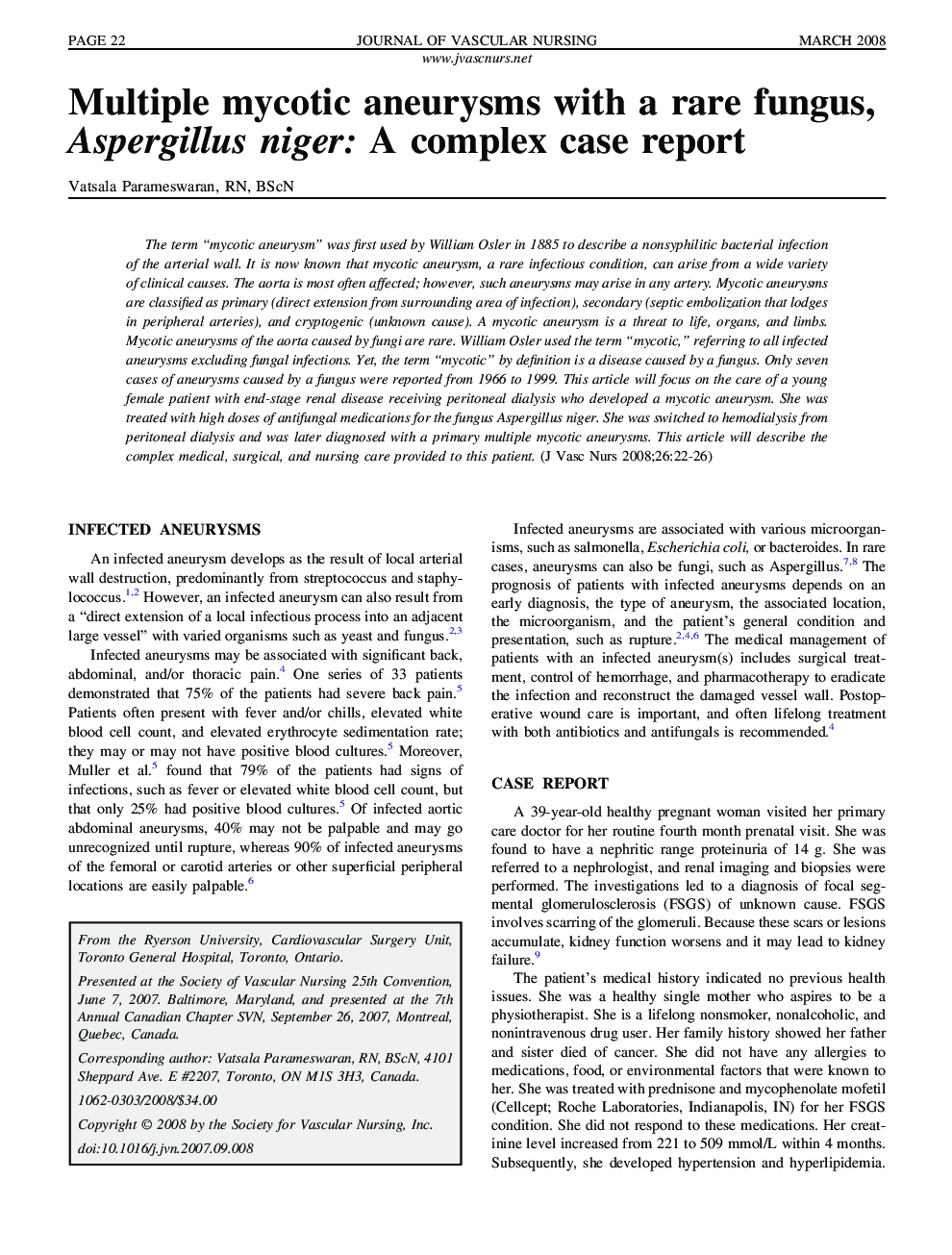| Article ID | Journal | Published Year | Pages | File Type |
|---|---|---|---|---|
| 2672729 | Journal of Vascular Nursing | 2008 | 5 Pages |
The term “mycotic aneurysm” was first used by William Osler in 1885 to describe a nonsyphilitic bacterial infection of the arterial wall. It is now known that mycotic aneurysm, a rare infectious condition, can arise from a wide variety of clinical causes. The aorta is most often affected; however, such aneurysms may arise in any artery. Mycotic aneurysms are classified as primary (direct extension from surrounding area of infection), secondary (septic embolization that lodges in peripheral arteries), and cryptogenic (unknown cause). A mycotic aneurysm is a threat to life, organs, and limbs. Mycotic aneurysms of the aorta caused by fungi are rare. William Osler used the term “mycotic,” referring to all infected aneurysms excluding fungal infections. Yet, the term “mycotic” by definition is a disease caused by a fungus. Only seven cases of aneurysms caused by a fungus were reported from 1966 to 1999. This article will focus on the care of a young female patient with end-stage renal disease receiving peritoneal dialysis who developed a mycotic aneurysm. She was treated with high doses of antifungal medications for the fungus Aspergillus niger. She was switched to hemodialysis from peritoneal dialysis and was later diagnosed with a primary multiple mycotic aneurysms. This article will describe the complex medical, surgical, and nursing care provided to this patient.
